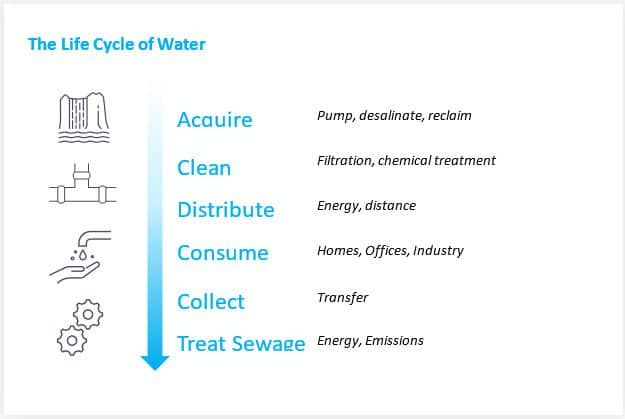Fresh water is a critical and rapidly dwindling resource. Worldwide water shortages have led the UN to define its sixth Sustainable Development Goal as “Ensuring the availability and sustainable management of water and sanitation for all people”.
But water availability is not its only environmental aspect. A key fact that often goes unnoticed is that a steady water supply – which involves pumping, treating, delivery and then treatment of the resulting sewage – is a hugely resource intensive process, which results in massive amounts of carbon emissions.
In fact, 13% of electricity in the US is used for water delivery and treatment. The energy requirement, combined with emissions from the resulting sewage, has a significant carbon impact: on average, every cubic meter of water consumed generates 23lb (or 10.6Kg) of carbon emissions.
With such a rapidly dwindling resource, one would expect water to be treated with the “respect” it deserves. However, water efficiency in buildings is quite shocking:
- Over 25% of the water entering a building, construction site or industrial facility goes to waste.
- The water lost to one cooling tower malfunction generates the same emissions as flying 170 people from New York to London.
- Just one leaky toilet wastes some 4.5 million liters (over 1 million gallons) and generates 46 tons of carbon emissions per year. That’s as much as a typical passenger car!
Our customers use WINT to help them improve the sustainability stance of their facilities. To illustrate the potential: in just one wasteful leak we detected at a well-known Manhattan high-rise, we saved 27 million liters of water and over 340 tons of carbon emissions every year.
Carbon emissions and water sustainability are two of the most urgent challenges facing the world. To understand how water waste results in excessive carbon emissions, we’ve done detailed research to analyzes this relationship and summarized it in a brief White Paper that dives into this phenomenon. It’s a must-read for anyone who cares to improve the carbon footprint of facilities.


